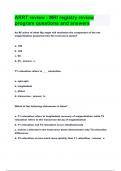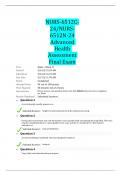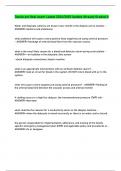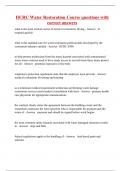-Formation, lead single for the album Lemonade, was released the day before Beyoncé performed at the Super Bowl final in February 2016 Formation Intertextuality – what a media product or text makes reference to another media product or text
-The Formation video, directed by Melina Matsoukas, was released with the song. This music video won numerous awards including Clio Award for Bricolage – where a media product is constructed with iconography & convention from many other texts, creating entirely new meanings. Often used when discussing postmodern media products. An
Innovation and Collective Excellence in a music video at the 2016 awards, and has been nominated in the music video category at the 59th Grammy example of a media product that uses bricolage is ‘mash up’ -e.g. Kill Bill
Awards
-The video is set against the backdrop of the flooding in New Orleans following Hurricane Katrina and the associated racial tension in America, and also
draws historical patterns with references to racism and slavery The Antebellum Era and slavery in the American South
-The Antebellum Era Refers to a period of time of economic growth in the American south in the 19th century, largely due to heavy industrialisation made possible by utilising black slave labour
How does this media product create meaning for its audience? -The Antebellum Era was a period of history of Southern United States from the late 18th century until the start of the American Civil War in 1861. This period in the South’s history was marked by the economic growth, largely due to its reliance on slavery, and its political influence on
-Low camera angle of police – their uniform makes them seem important & intimidating to boys dancing in front of them. This could make the audience the US Federal government. It was also characterised by the rise of abolition and the gradual polarisation of the country between abolitionists and supporters of slavery
sympathise with the boy as there is a line of police officers stopping him, therefore the police are wrong for doing this
-variety of low camera angle shots of Beyoncé and other women – shows their body language as confident representing black women as strong & -The era was characterised not only by slavery, but also the costumes owned by slave owners. These dresses were elaborate, they has symbolic connotations of racism and the advocation of slavery, due to being worn by those who owned slaves
powerful, breaking the stereotypical representation of black women – making audience feel empowered
-mid-shot of Beyoncé sitting on top of police car –used to suggest she is more powerful than police & others in society (white people), further implies that Gone with the Wind
she is popular & successful music artist as she is above everyone. This makes the audience idealise her wanting to be like that. However, this is a -the famous media product set in the Antebellum South in 1939 ‘Gone with the Wind’, still the highest grossing film of all time when adjusted for inflation. A riches to rags to riches story, the film charts the collapse of the American South during its four hours running time, and explores
controversial message & some may disagree saying that police are important in our society the relationship between slave owners and slaves in a way that is guaranteed to make modern audiences uncomfortable
-tracking shot of the salon/workshop –been used to show women from different backgrounds & popularity of wigs with black women – gives audience -the most prominent black character in ‘Gone with the Wind’ is Mammy. She represents a black unconventional stereotype
sense of diversity Mammy and Scarlett scene
-tracking shot of the wall saying “stop shooting us “–references violence & conflict between black people and the police. Many young people are being shot -white people represented as stereotypically beautiful – mise-en-scene of costume
by the police – powerful message in video – allows audience to reflect on conflict (recent example – George Floyd) -Black people represented as below the white - she is a slave helping Scarlett to get ready. However, Mammy’s relationship with Scarlett can be seen as unconventional as they are extremely close & she is loving towards her - represents black people as friendly & caring
-mid shot of the boy dancing in front of police is reflective of how police brutality is high & police illegally & unjustifiably arrest black people. The police in -one binary opposition encoded in this scene – difference between black and white. White people allowed to go out & dressed nicely shown by mise-en-scene of costume, whereas black people have to stay in and help them
the background are holding up their hands suggests they are about to surrender. Beyoncé is showing everyone that the police wrongly accuse black people
for crime & police are giving up and are aware of what they are doing is wrong This era directly mentioned in Formation
Formation & The Antebellum South
-editing is professional, high-quality music video -Beyoncé, a black woman, is dressed in a costume associated with white slave owners. This is because she wants the audience to know things have changed & it’s not the same for black people today. It shows she is against slavery & shows equality between black and white
-scenes of Beyoncé dancing outside - editing changes, looks like it’s filmed on old camera, use of editing changes the music video & links to message in the -she is calling for change because people still believe in this inequality because black and white – linguistic reappropriation, reclamation or resignification is the cultural process by which a group reclaims words or artefacts that were previously used in a way disparaging of that group. It
video that these issues were happening before & are still happening now is a specific form of a semantic change (change in a word’s meaning). Linguistic reclamation can have wider implications in the fields of discourse and has been described in terms of personal or socio-political empowerment
-editing cuts to scenes of people dancing in the street – connotations of black culture, main focus on video. Audiences can relate, especially target audience
of young black women
Initial analysis Hurricane Katrina
-natural lighting used in most shots – suggests issues raised are everyday occurrences & need to be changed -the voice in the beginning of the video -23rd August 2005 – 31st August 2005
-high key lighting on women in empty swimming pool – like a spotlight on them, shows their importance shows conflict -total fatalities – 1,833
-the mise-en-scene of props such as police -caused floods in New Orleans as storm was so strong
-Beyoncé is wearing expensive, designer clothing & lots of jewellery (in opening scene of her on police car and dancing in swimming pool she is wearing car & the lights suggest there is conflict -caused $125 billion in damage
Gucci) – connotes her wealth, powerful & popular status in society. It shows she is wealthy & successful music artist. This makes the audience idolise her between the police and black community -New Orleans city was rebuilt & still left damage today
and want these things – they want to be like her. But, suggests change in society- before black women didn’t have status & wealth but now showing black -the purpose of the video is to get the -affected many states, including: Alabama, Louisiana, Mississippi
women do audience to understand that this is
-costume – she is wearing heels and revealing clothing - been sexualised which is stereotypical for women in music videos & music industry - this links to discrimination black people face is still Formation and Hurricane Katrina
Van-Zoonen’s theory that women only appear in media products to be looked at by heterosexual men relevant in today’s society and needs to -Formation uses iconography such as the water in the opening scenes of the video with Beyoncé on top of the police car - image suggests the government & police didn’t help that people in New Orleans after hurricane Katrina & should
-costume – Beyoncé is wearing black along with men in background – colour black has connotations of death & funerals. This could suggest she is mourning be changed have done more to save lives
the death of black people killed by the police. Also, she is mourning the death of those died in hurricane Katrina - makes audience realise the severity of the -the video makes audience think about -In Formation buildings are shown from the damage of flood water – iconography suggests Beyoncé wants the government to realise they should have done more to help – George Bush president time with hurricane
issue. Black is also a powerful colour & could have been used to make her stand out the hurricane and the lives that have been -the voice in the beginning of formation says “what happened at the New Orleans? “ – shows music video utilises iconography to show direct impact hurricane Katrina had on state
-hair and make-up – Beyoncé’s hair in braids - used to show a stereotypical hairstyle used of those of ethnic minority. This makes the audience feel destroyed - important message
empowered as she is representing them showing people from ethnic backgrounds can be successful -Black people are represented in the video Hurricane Katrina and black people
-prop of police car –shows conflict between police & black people. This important message makes the audience fight for change needed in society as – shown to face racial discrimination & -the hurricane was associated with black people as many of this race live in New Orleans, where the hurricane affected
racism still happens institutionalised racism which can be seen -the black people were not given enough support during the hurricane by the government & were left to themselves – many black people saw this as a sign of neglect
through mise-en-scene of police car & -the hurricane affected the whole of the black community in America – many saw it as unfair that the government were doing little to help
-women & Beyoncé all dancing at the same time – gives audience sense of unity & togetherness, shows female empowerment police lights. This representation is -many white people argue that the governments treatment would have been the same if it affected them – but some argue government was racist towards black community
-binary opposition between black women in video looking wealthy through costume & slavery - shows how society has change over time stereotypical as in society today black -the response to this disaster draws on fundamental issues in America – shows there is still racial discrimination towards black people. The president at the time George Bush was white & therefore shows that discrimination against
-binary opposition between police & black people - shown by police having power & status and black community being abused through racial people still face discrimination & racism. black people was in the government, otherwise he would have done more to help
discrimination Beyoncé is sitting on top of police car -Formation was released when Obama was president (first black president) – therefore people are more likely to listen to issues in video & realise the unfair treatment of black people
-props & costume of her wearing expensive outfit. Setting has collaborative décor. Reflects slavery, especially those exploited by cotton farm owners who implying black people are dominant and
enslaved black people to pick cotton. This creates binary opposition as Beyoncé is now showing the black people are not afraid of showing how in today’s better than the police & other members
society they are able to help positions of power & authority in society
Formation as reappropriation
-slavery has been represented – the
Reapporopriation- the process of taking an offensive word, concept or idea and changing the meaning of it
women look wealthy through mise-en-
New Orleans and bounce music
scene of costume - this binary opposition
B.E.A.T -black women have been represented in the image
shows that society has changed
What specific elements of iconography did the producers of Formation use from That B.E.A.T? -slavery has been represented – these women would have been slaves
-video is al a typical music video shown
-the iconography of the flood water has been copied in the music video, to create awareness about Hurricane Katrina in New Orleans -the representation of these groups being slaves is because they are black women. However, these women aren’t represented as slaves, which can be shown by the mise-en-scene of their costume, which looks wealthy & something
through sexualisation of women –
-Formation also uses iconography of police cars & police lights taken from That B.E.A.T to show inequality between police & black community black people before weren’t allowed to wear – something worn by slave owners
stereotypical of pop music videos & the
-use of the long shot allows audience to see all women – symbolises community & all these women are black & have similar backgrounds – yet all different. This gives sense of togetherness & black women are strong independent
music industry
What literal pieces of footage of Formation take from That B.E.A.T? individuals
-however, the music video includes topics
-scenes of flooding at start of video -Beyoncé is challenging stereotypes about black women – showing times have changed & black women should no longer be treated like slaves
seen as controversial & makes some bold
-used scenes of the light & boys/men in dark room -this message can impact the young black female target audience as it can be seen as empowering & they shouldn’t listen to people’s views about black women because Beyoncé is showing they are strong & powerful individuals
statements – so the video not -reappropriation can be applied to this image by the word ‘slavery’ which would have negative connotations, however Beyoncé is turning the message into something empowering & that those people made history & without slavery,
-tracking/establishing shot of buildings & neighbourhood
stereotypical for music videos
-long shot of under the bridge black people wouldn’t have equality & the position they have all day
-scenes of police lights flashing
-this music video is not made for
-shot of man with hands behind his back
everyone - it’s made for young, black
women. However, different audiences still
Bounce music has a big LGBT following and is fundamental to the LGBT scene in New Orleans. How many LGBT themes come through in That B.E.A.T?
enjoy her music and her Lemonade album
Why?
because of Beyoncé’s star appeal
-the gay community have come together with the bounce music & make it their own
-the bounce music allows the LGBT community in New Orleans to express themselves & have their own identity
Formation as a celebration of black culture
Why is Beyoncé using themes and iconography of That B.E.A.T?
Steptoe argues that Beyoncé has rejected ‘monolithic’, as in simple & straightforward representation of black identity, and instead represents a range of disparate and complex black identities for the audience to engage with and to identify with
-because some of the messages in the video are important e.g. New Orleans flooding – so scenes taken from this to add in her own music video conveys
the importance of this issue
-mise-en-scene of her hair in cornrows/braids is stereotypical of black women’s culture. There is an exaggeration and hegemonic assumption that black women in particular will conform to normative ‘white’ beauty standards, despite the pain,
-Beyoncé is a millionaire, so if she uses the images without consent (copyright) she can easily pay, because she see the issues presented as more important
cost & time that this can take. However, Beyoncé doesn’t do this
-Beyoncé appears as a stereotypical black 1970s working class women (on top of the stairs) with kinky pulled back hair, a kind of cool braided priestess, and a laid back woman spinning in her car & flicking her braids. In each case, these hairstyles
Formation, Beyoncé and representation represent a subversion of hegemonic expectations of black women, a celebration of black identity for the audience
Formation resists stereotypical representation of black people by presenting black identity as complex & challenging -the ideological message presented to young black female audience is that they can be successful & it doesn’t matter their race
-this makes young black females target audience feel empowered
Formation as a reaction to historical racism
-Slavery was finally abolished in North America in 1865, following the collapse of the confederacy and the American Civil War. However, despite being
illegal for a relatively long time, there still exists great discrepancies in the rights and lives of black people in America, as well as other countries -mise-en-scene of her costume has connotations of race as they are all dressed in black. The use of the colour black also has connotations of death, which could link to the people who died in Hurricane Katrina
-the colour black also links to race, which can be empowering & she wants to emphasise that she is strong, independent black women & breaks the stereotypes
Types of Mankina (1854) -mise-en-scene of the jewellery has connotations of wealth & shows Beyoncé’s success as a music artist – contrasting the stereotype of black women
-black people are assumed to be more animalistic – such as s chimpanzee -costume & large hat Beyoncé is wearing has connotations of wealth which further breaks the stereotype of slavery as she is wearing something worn by rich slave owners
-whereas white people are human, through the shape of the skull -the ideological message presented to the young black female target audience is that they should be proud of their culture & show it off because it is empowering
-the theory is serving the purpose that black people are different, inhuman & animalistic, like a chimpanzee, therefore they are unable to do things white -impacts young black females because Beyoncé is telling them to break the stereotype, which can be a good thing for the audience as they may be victims of racism & bullied because of their race
people do – therefore make ideal slaves
-theory was created in 1854, where in America the states of Nebraska & Kansas were allowed to decide slavery in their boarders. Therefore, the theory
may be attempting to justify that slavery should be allowed as they are inhuman -mise-en-scene of her hair has connotations of a black woman as her hair is curled & natural – showing her natural beauty
-this image of her on top of police car – shows her status & could suggest black people are more important than the police & government, especially as black people were given little help in New Orleans.
However, this image could suggest black people are powerful & important
-the ideological message this is presented to the young black female audience is that women are powerful & equal to/better than other members in society, which goes against the stereotype that white people are dominant in our society
-this image makes young females feel empowered & they can achieve anything – an important message for this audience of they have been victims of racism, they can feel important & equal to others
-Beyoncé is a role model which is important for young black people as something to look up to & aspire to be like







